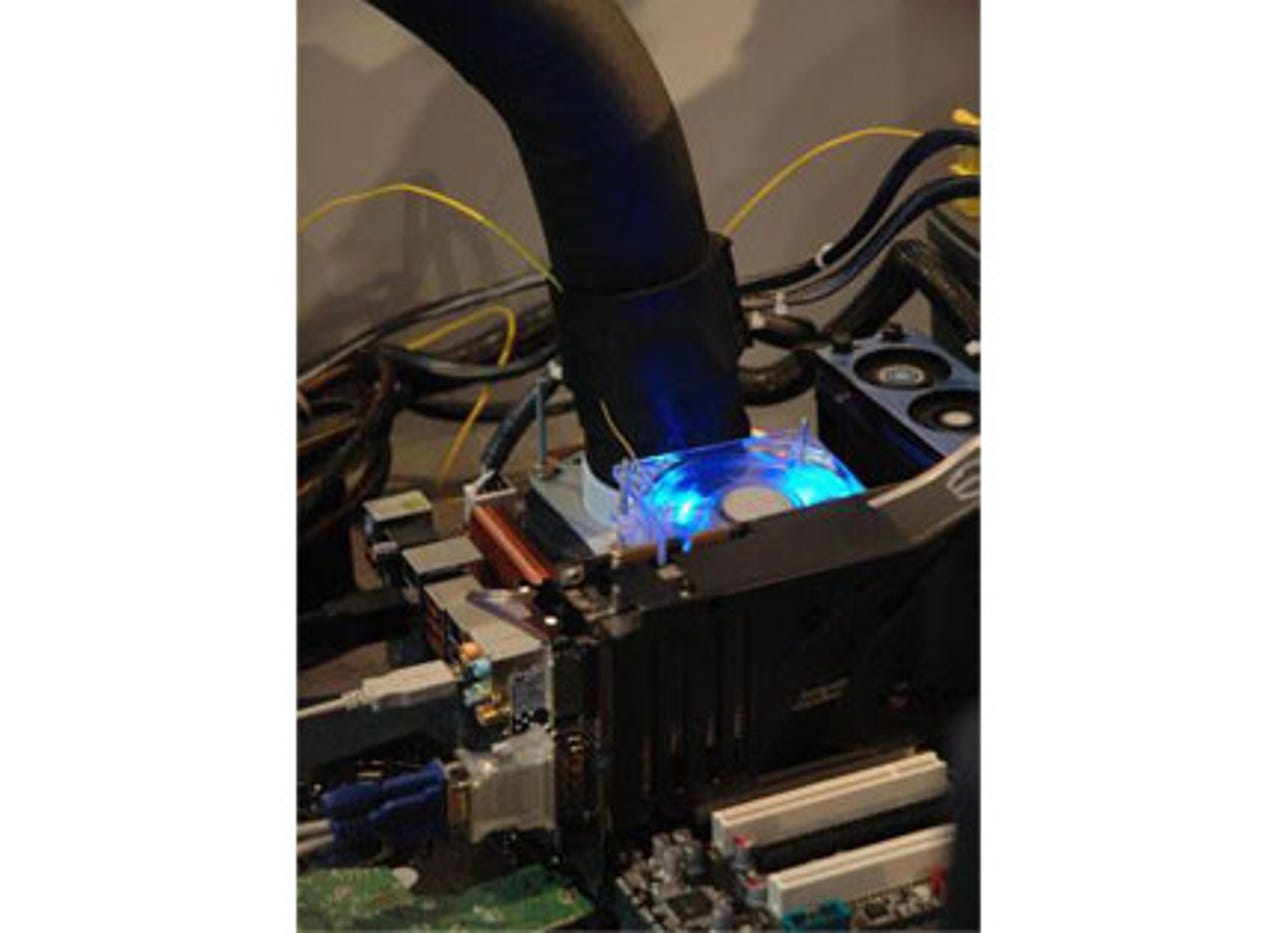Intel unveils its tech treasures


The world's fastest quad core, running at 5.56GHz, thanks to that big black pipe connected to...
... the world's biggest heatsink. Closely resembling the cooling system on a Morris 1100, this beast keeps the CPU at around -160°C. Laptop version: not pictured.
The company's next-generation, 45nm (nanometre) microarchitecture, Nehalem, working. Sixteen threads — eight cores, two threads a core — are running at animating a ridiculously shiny multicoloured raytracing graphics benchmark. The silicon was finished three weeks ago, and the relief and pride was clear.
The business end of a USB 3.0 cable. Compatible with existing USB sockets, the small protuberances along the bottom are optical connectors exposing fibres within the cable. These are necessary for the roughly 5Gbps speed that the standard should support.
Junior, the Stanford University robot car designed for the Darpa street-racing challenge, is studded with scanners, aerials, radar and laser devices. But we still can't work out how it got up the escalator to the first floor — or whether it managed this by itself.
The Asus Eee is a $200 (£99) Linux laptop. This tiny device feels very solid and looks rather attractive. The spec is just about acceptable — VGA screen, three-hour battery life, 800MHz Dothan processor, 2GB or 4GB of flash storage — but it runs Firefox and OpenOffice.org perfectly well. We want one.
Without this kind of device, there would be no Intel. Known as MCEMU, it's a future generation processor emulator: quarter of a million dollars' worth of reprogrammable logic chips configured to imitate silicon as yet uncreated. The emulated terascale processor runs at 4MHz — around 1,000 times slower than the real thing — but it gives the engineers complete access to everything that happens inside the chip when it's running real software.
Intel is listening to your microwave. Research is going on into spotting tiny gaps in microwave-oven radiation interference, and squeezing as much Wi-Fi through as possible before it gets back to heating your spud and wiping out your streamed video.
A working fuel cell in production! Well, not quite. Technically a fuel cell, this device is closer to an ordinary battery, but with the rather wonderful attribute of producing eco-friendly soapy substances as it runs, rather than ending up as a pile of toxic metal. This model is a one-shot version with around 20 watt-hours of power: a refillable variant is on its way.
A mini PCI Express module containing an HSDPA modem. So that'll be seven-odd megabits per second of mobile broadband, running off existing infrastructure and just about ready to go, then.
Why not use that huge expanse of dead area on the back of your laptop lid as a radiator to cool the processor? Well, it's very difficult to get the heat through the hinge: but problem solved with this neat little rotating hinge packed with thermal grease. It survives 40,000 openings and closings, and means the cooling fan can run very slowly and quietly, if at all.
Electronic ink, now in colour. Admittedly it's only 256 colours, and the sort of faded tones reminiscent of Edwardian experiments in photography, but it does work and can only get better.
And finally, observant readers will notice there's been no mention of Pat Gelsinger's beard. This is because the stresses and strains of the job have been such that the man has run off to join a Japanese monastery. But that's OK, we've tracked him down...